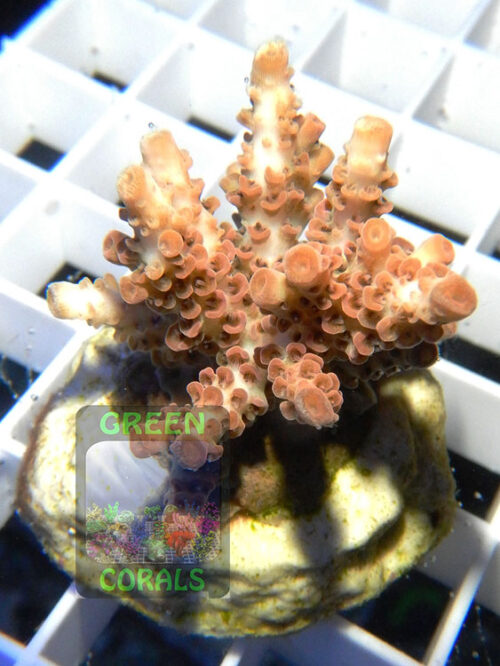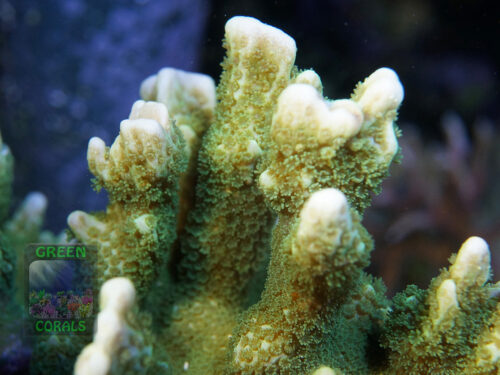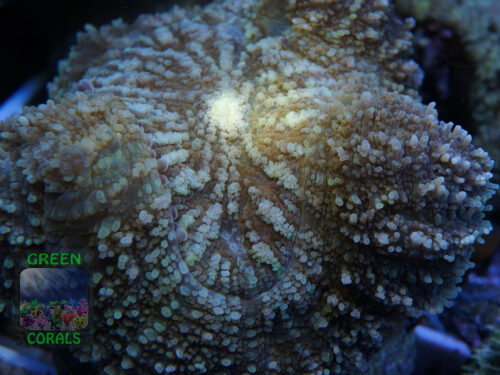Die knallgrüne, krustenförmig wachsende Briareum ähnelt auf den ersten Blick einer Röhrenkoralle (Stolonifera), wird allerdings zu einer völlig anderen Gruppe gerechnet: Nämlich zu den Kalkachsenkorallen (Scleraxonia) welche solch farbenprächtige, epische Hornkorallen enthält, wie etwa Suberogorgia, Melithaea, oder die Edelkoralle Corallium rubrum aus dem Mittelmeer. Alles azooxanthellate Arten und leider kaum im Aquarium haltbar.
Briareum hingegen besitzt symbiotische Zooxanthellen, ist gut haltbar und bildet hübsche, stark fluoreszierende Polster aus. Sie kann andere Korallen überwachsen und sollte möglichst nicht zentral im Riffaufbau platziert werden. Ein Fressfeind sind z.B. große Porzellanschnecken, wie Cypraea tigris. Nach unserer Erfahrung braucht Briareum erhöhte Nährstoffkonzentrationen, um zu gedeihen und wächst in nährstoffarmen Steinkorallenaquarien eher schlecht.
The bright green, encrusting Briareum resembles a tube coral (Stolonifera) at first glance, but is classified in a completely different group: Namely to the calcareous axis corals (Scleraxonia) which contains such colorful, epic horn corals as Suberogorgia, Melithaea, or the noble coral Corallium rubrum from the Mediterranean Sea. All are azooxanthellate species and, unfortunately, barely sustainable in the aquarium.
Briareum, on the other hand, has symbiotic zooxanthellae, keeps well, and forms pretty, highly fluorescent cushions. It can overgrow other corals and should not be placed centrally in the reef structure if possible. One predator is large porcelain snails, such as Cypraea tigris. In our experience, Briareum needs elevated nutrient concentrations to thrive and tends to grow poorly in nutrient-poor stony coral aquariums.
















